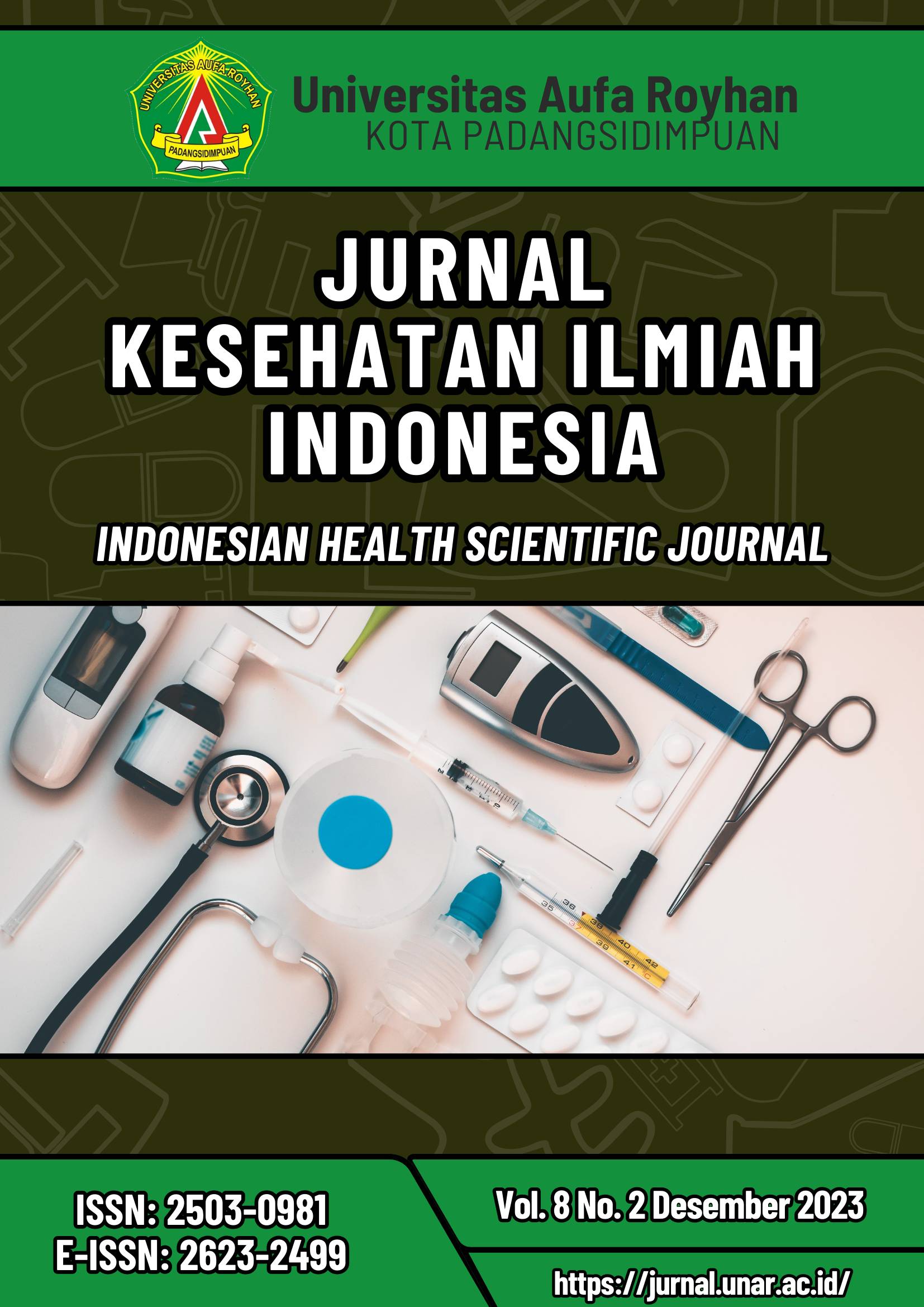PENGARUH PENGGUNAAN BIRTH BALL TERHADAP KEMAJUAN PERSALINAN KALA I DI KLINIK JULIANA DALIMUNTHE PADA TAHUN 2023
DOI:
https://doi.org/10.51933/health.v8i2.1264Keywords:
Birth Ball,Progerss Of LaburAbstract
Labor is the event of the birth of the baby, placenta and amniotic membranes womb
to the outside world. Normal childbirth occurs at the age of months without any presence complication. Childbirth begins when the uterus contracts and causes changes in cervix
(opens and thins) and ends with the complete delivery of the placenta (Affandi, 2017).
According to the World Health Organization (WHO) more than 85% of the process deliveries are carried out normally and 15-20% die from disease andcomplications related to pregnancy and childbirth of 295,000 maternal deaths, that is the largest majority (94%) are in developing countries (WHO, 2018). One of the efforts to prevent prolonged labor is the birth ball method, because by sitting on top Birth ball can stimulate postural reflexes and maintain deep spinal posture good condition, thereby facilitating descent of the fetal head, reducing the duration of 1 (Sriwenda, 2016) The purpose of this research is to find out if there is a therapeutic effect Birth Ball on the progress of the first stage of labor at the Juliana Dalimunthe Clinic 2023. The research method used is univariate and bivariate. This article was obtained through Google Scholar with a range of 2017-2022. Results obtained from 20 Respondents who did birth ball therapy, namely the average progress of the first stage of labor in maternity mothers are very influential on the progress of the first stage of labor (100%). So got translations from these journals, it is true that there is an effect of birth ball therapy on the progress of the first stage of labour. the suggestion is to become a midwife's skill to help shorten the duration of the first stage of labour
Downloads
Published
How to Cite
Issue
Section
License
Indonesian Health Scientific Journal (JKII) is licensed under Creative Commons Attribution-ShareAlike 4.0 International.
















